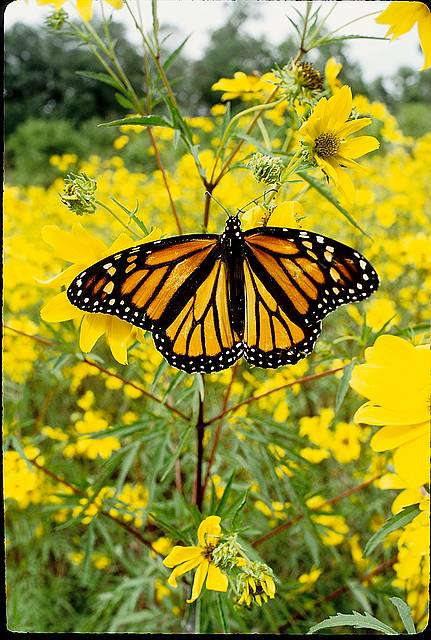-
Some interesting notes on bats and bat houses
An interesting post on bats and habitat, and why sometimes bat houses will or won’t attract occupants. Taken form the Bluebird Monitors Forum, and published with permission, by: Tina Mitchell in CO.
“Hi, list folks–
I really appreciate bats–at least the bats we have here out west. (I know a few vampire bats have been found crossing from the Mexican border. They make me a tad nervous, but mostly because I don’t know much about them, I suppose.)
A number of years ago, when we could still rehab bats here in Colorado, I did a week-long “boot camp” on bat rehabilitation and rearing at Bat World Sanctuary in TX. (Bats have been officially declared a rabies-vector species in CO. This means, in our state, that no one is allowed to rehab them now unless everyone on the premises has had the pre-exposure series of rabies vaccinations. Our rehab center can’t mandate that, since we have so many volunteers. So we no longer rehab bats, I’m sorry to say. The ones I’ve helped with were fascinating, gentle, intelligent-seeming creatures. Individual in-home rehabbers are the only hope left for for injured, ill, and orphaned bats in this state.)
What I recall, from a deep, dusty memory of the Bat World training, is that most bat houses that are used serve as nursery colonies–groups of mothers and their pups. It’s certainly possible that bats in the east act differently. And a one-week training years ago hardly makes me a bat expert. The most common bat species we have here is the little brown myotis. Aside from nursing colonies, these bats tend to roost during the day singly, in rock crevices, under loose bark, and wood piles. Single bats will occasionally roost in or around buildings, but it’s not their most common choice here.
So a bat house–unless you’re within 1/4-mile or so of water, where nursing colonies tend to be–doesn’t get any bats. We certainly tried on our property, before I knew this. Repeatedly. Even though we see these marvelous insectivores in decent numbers at night. But, as I said, perhaps they behave differently in areas other than arid pinyon/juniper habitat out west and will use houses as daytime roosts elsewhere.
An interesting overview article about White-nose Syndrome (WNS) appeared recently in Microbe. Don’t be fooled by the title of the journal–it’s a very readable article. Toward the end of the article, the authors mention that WNS has existed in bats in Europe for quite a while. Yet those populations have not experienced elevated mortality rates. That sounds like a promising line of research for some wildlife researchers. We surely need some hope for these valuable mammals.”
-
Butterfly Houses may offer protection from weather
Butterflies’ migration spans thousands of miles, and although they can survive cold weather, these winged wonders will die if they get wet when temperatures drop. Providing butterfly houses may just help the Monarch’s population. Although they don’t hibernate during the warm summer season, creating a butterfly-friendly habitat will help them flourish and thrive.
Because butterflies will not drink from an open water source, things like leaf misters and puddlers in your yard are most helpful for a fresh water source during extreme heat. Having both the host plant for their metamorphosis and nectar plants for food will encourage population growth too.
Check out this interesting video from Defenders of Wildlife and Discovery on the Monarch Butterfly.
-
butterfly houses and more will entice them to your place
Although I can’t say for sure that butterflies actually use butterfly houses, there sure are some beauties to adorn your garden. This pole-mounted butterfly house features rich redwood with hand-etched glass panels. I can say with certainty that butterflies absolutely adore the gentle spray from leaf misters! We use two during the summer months and see daily activity throughout the season.
Over ripened fruit is also a butterfly favorite. Bananas, melon, pears and oranges that are just a tad past their prime are a sweet treat for these winged wonders. The fruit also attracts fruit flies and these provide butterflies with additional protein. Molded fruit is not advised, so it must be monitored to assure this doesn’t happen. Set fruit out on a plate, on a deck or porch rail, even an up-turned pot will work. But the butterfly garden must be part of the equation too.
Native plants to provide nectar are necessary in creating a butterfly garden. Wild Columbine, Rose Verbena, Button Bush, Blue Lobelia, Cardinal Flower, Asters, and Milkweed are a few favorites. Besides nectar plants, host plants are needed for the metamorphosis from caterpillar to butterfly. These plants will likely be “munched” in the process, but they’ll come back again next year, and you’re providing critical butterfly habitat by letting them go. Some of the more popular host plants include Parsley, Dill, Fennel, Carrot and Milkweed. Trees include Wild Cherry, Willow, Plum and Poplar.
Adding a place to “warm in the sun” is also quite attractive to butterflies. You can easily arrange heat-absorbing rocks in a sunny area, add some sand and salts and keep the area moist to further entice butterflies. It’s recommended to first line the area with plastic to keep the salts from leaking into the soil. Definitely stop using any pesticides, chemicals or fertilizers in the area as well, most people tend to overlook this important factor when creating a butterfly habitat.
So… although I can’t say for sure that butterflies use butterfly houses… these are some good ideas on creating an enticing butterfly habitat at your home.




